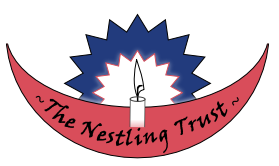Our friends may be interested to read this account of just a couple of days of Sue's life in Nepal :
"I joined the Trauma Centre mobile medical team early Monday morning. We set off for Naya-gaun a remote village in the remote Dolakha region which had been badly hit by the earthquake and where no help had yet arrived. There were three trucks in convoy with us, loaded with tents, rice, lentils and clothes which had all been donated by Nepali families and local organisations. There were also boxes and boxes of donated medicines, dressings, gloves, masks, soap, sanitary protection and a calor gas stove to cook food, dhal batt for all the volunteers. Travelling with me in an old bus were about twenty volunteers, three doctors, three nurses and students who had come to help.
It was a long, hot torturous journey, so many times the bus got stuck and people who were following on motorbikes, had find timber and stones to block over the gullies so we could proceed. Sometimes the bus lurched so violently we wondered if it would right itself. We were so hot and the bus was stuffed full with sacks of rice, boxes of biscuits and water bottles so there was no space to move.
After seven hours the bus could not go any further with the weight of people on board and we still had the steepest part of the mountain to climb! We all took a bag and began the trek upwards, I was glad I had trekked with Bijen, to Poon Hill a couple of weeks before - at least I was a little prepared for the rugged terrain. However, it was so steep I really flagged in the sun, and immediately people I had never met before came to my aid with strong hands to help me keep moving up the rocky mountain track, giving me water, and carrying my load the rest of the way. My new friends were typical of the Nepali people - so kind.
When we reached the top we saw the bus had made it before us by taking a different route. The weather changed and a strong gale suddenly blew up. We took shelter in the bus. The trucks were still to arrive with our supplies and a tent for us to sleep in for the night.
After about an hour we heard the trucks had been stopped much lower down the mountain in another village where people feared that they would not get any supplies if they allowed the trucks through. The people were angry and hungry – no aid had reached these villages and people were desperate. Eventually just one truck made it up the mountain to us but the wind was too strong to pitch a tent or cook the food. By 11pm the wind dropped and the men cooked food against a wall of a ruined house - we ate dhal batt and then settled down to sleep inside the bus for safety. We couldn’t really sleep and in the early hours we felt further tremors, which shook the bus and cancelled out any ideas of sleeping!
Dawn broke at 5am and we found water running from a plastic pipe near the bus so were able to wash away the dust and grime from the previous day. We had black tea and biscuits and sorted out supplies from the third truck including medicines and dressings with which we set up a makeshift health clinic in a tent in the middle of the village. By 7.00 queues of villagers had arrived from all the local areas. Many needed treatment for chest infections, diarrhea and sickness as well as infected wounds.
By 10.00am the sun was high and the inside of the tent was sweltering. We stopped for dhal batt and water and then worked until the last person was seen at about 15.00. So many sad stories like a woman who brought her 18 month old with sores, her three year old daughter and mother had died in the earthquake. Some amazing stories like how a 16 year old boy jumped from the upstairs window of his home seconds before it crashed to the ground and survived.
We headed back to Kathmandu late that afternoon with two trucks down we were unable to go to another village as planned because of lack of supplies. After two kilometers the bus got stuck in a deep gully as it tried to turn a sharp bend. Then after many attempts to get it out the engine conked and no amount of ideas and shouting could get it started again. The driver decided to phone a mechanic in Bhaktapur, about 50 miles away, for instruction! This was carefully relayed but still nothing. After a couple of hours a motorbike arrived and the fault was discovered – the engine coughed into life and we were on our way back home again.
The bus reached Kathmandu late in the evening – I was so pleased to be home again with Anamita and Bijen and to have a wash. That night sleeping on the floor was sheer luxury and I didn’t wake until morning – if there were any tremors I didn’t feel them!"
"I joined the Trauma Centre mobile medical team early Monday morning. We set off for Naya-gaun a remote village in the remote Dolakha region which had been badly hit by the earthquake and where no help had yet arrived. There were three trucks in convoy with us, loaded with tents, rice, lentils and clothes which had all been donated by Nepali families and local organisations. There were also boxes and boxes of donated medicines, dressings, gloves, masks, soap, sanitary protection and a calor gas stove to cook food, dhal batt for all the volunteers. Travelling with me in an old bus were about twenty volunteers, three doctors, three nurses and students who had come to help.
It was a long, hot torturous journey, so many times the bus got stuck and people who were following on motorbikes, had find timber and stones to block over the gullies so we could proceed. Sometimes the bus lurched so violently we wondered if it would right itself. We were so hot and the bus was stuffed full with sacks of rice, boxes of biscuits and water bottles so there was no space to move.
After seven hours the bus could not go any further with the weight of people on board and we still had the steepest part of the mountain to climb! We all took a bag and began the trek upwards, I was glad I had trekked with Bijen, to Poon Hill a couple of weeks before - at least I was a little prepared for the rugged terrain. However, it was so steep I really flagged in the sun, and immediately people I had never met before came to my aid with strong hands to help me keep moving up the rocky mountain track, giving me water, and carrying my load the rest of the way. My new friends were typical of the Nepali people - so kind.
When we reached the top we saw the bus had made it before us by taking a different route. The weather changed and a strong gale suddenly blew up. We took shelter in the bus. The trucks were still to arrive with our supplies and a tent for us to sleep in for the night.
After about an hour we heard the trucks had been stopped much lower down the mountain in another village where people feared that they would not get any supplies if they allowed the trucks through. The people were angry and hungry – no aid had reached these villages and people were desperate. Eventually just one truck made it up the mountain to us but the wind was too strong to pitch a tent or cook the food. By 11pm the wind dropped and the men cooked food against a wall of a ruined house - we ate dhal batt and then settled down to sleep inside the bus for safety. We couldn’t really sleep and in the early hours we felt further tremors, which shook the bus and cancelled out any ideas of sleeping!
Dawn broke at 5am and we found water running from a plastic pipe near the bus so were able to wash away the dust and grime from the previous day. We had black tea and biscuits and sorted out supplies from the third truck including medicines and dressings with which we set up a makeshift health clinic in a tent in the middle of the village. By 7.00 queues of villagers had arrived from all the local areas. Many needed treatment for chest infections, diarrhea and sickness as well as infected wounds.
By 10.00am the sun was high and the inside of the tent was sweltering. We stopped for dhal batt and water and then worked until the last person was seen at about 15.00. So many sad stories like a woman who brought her 18 month old with sores, her three year old daughter and mother had died in the earthquake. Some amazing stories like how a 16 year old boy jumped from the upstairs window of his home seconds before it crashed to the ground and survived.
We headed back to Kathmandu late that afternoon with two trucks down we were unable to go to another village as planned because of lack of supplies. After two kilometers the bus got stuck in a deep gully as it tried to turn a sharp bend. Then after many attempts to get it out the engine conked and no amount of ideas and shouting could get it started again. The driver decided to phone a mechanic in Bhaktapur, about 50 miles away, for instruction! This was carefully relayed but still nothing. After a couple of hours a motorbike arrived and the fault was discovered – the engine coughed into life and we were on our way back home again.
The bus reached Kathmandu late in the evening – I was so pleased to be home again with Anamita and Bijen and to have a wash. That night sleeping on the floor was sheer luxury and I didn’t wake until morning – if there were any tremors I didn’t feel them!"



